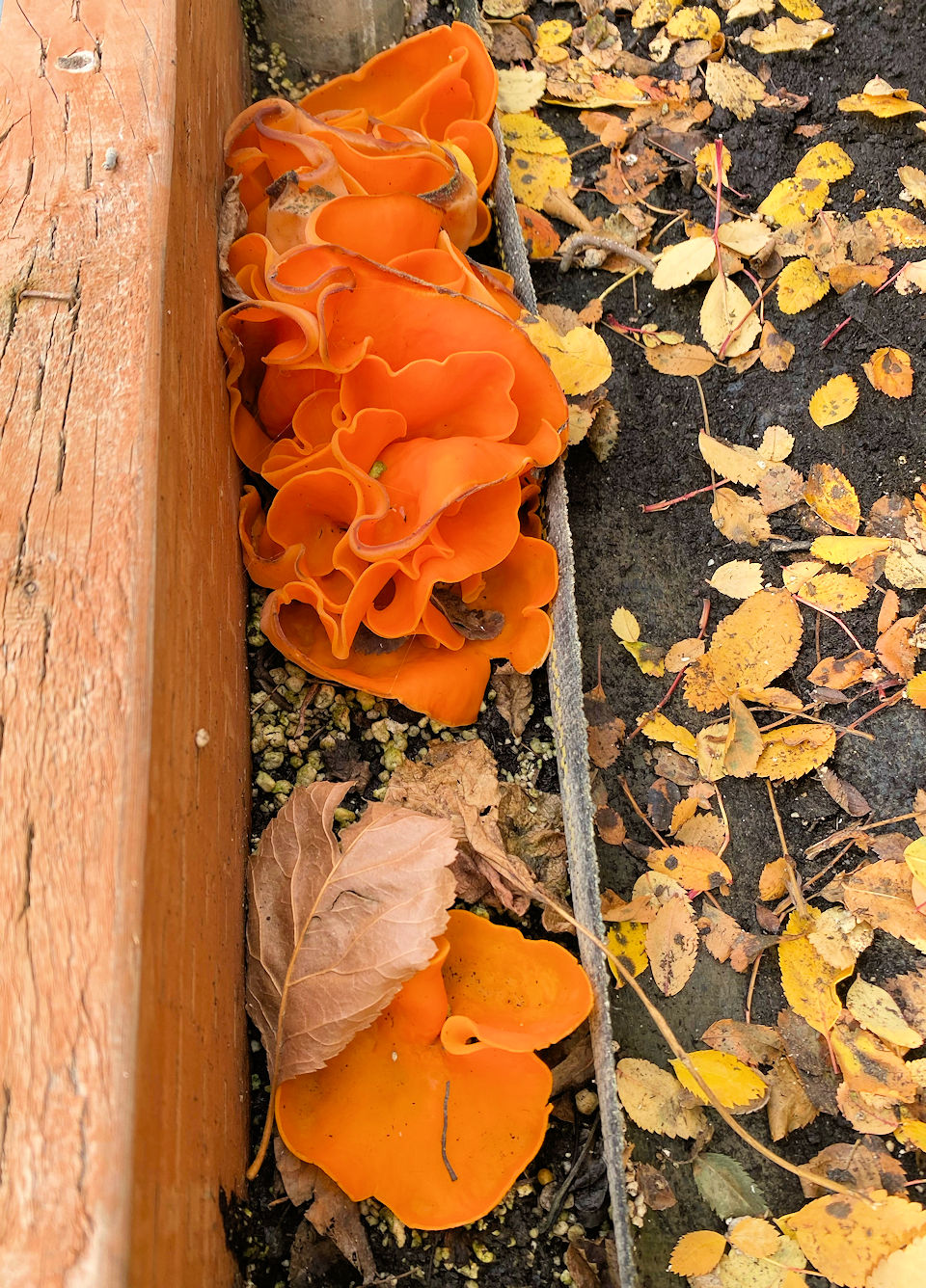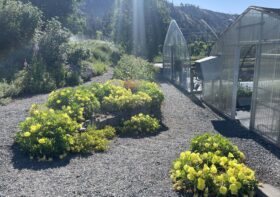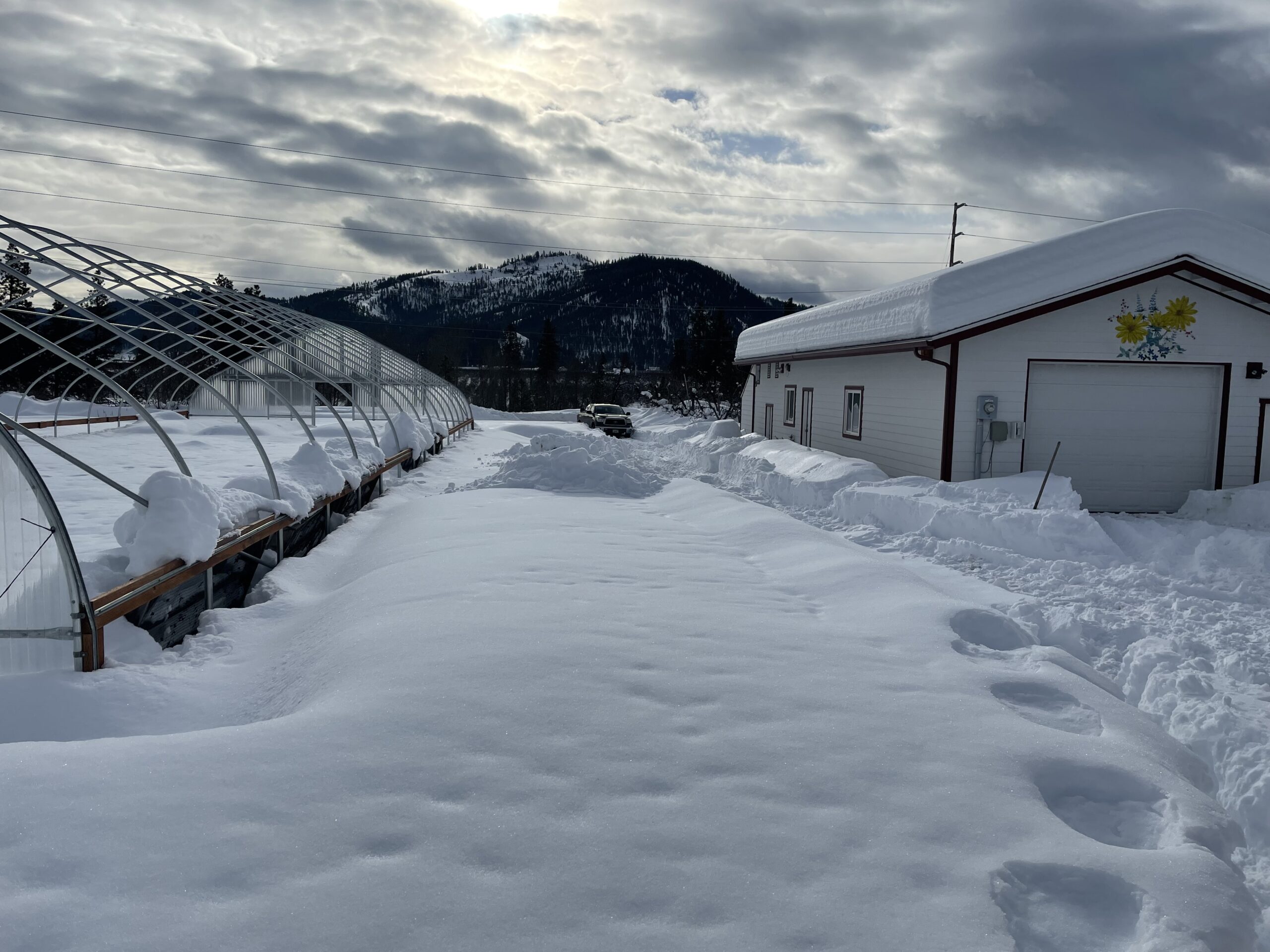Fall Color in the Nursery… and Goodbye

With the days shortening and the cooler nights having arrived, plants in the nursery take on their fall colors. You can see in the photo above red osier dogwood (Cornus sericea) in the lower left and, on the right, water birch (Betula occidentalis) in yellow and the lighter red of Douglas hawthorn (Crataegus douglasii) behind them.
In the foothills of the Cascades in Central Washington we are accustomed to the range of reds that vine maple (Acer circinatum) display during autumn. Plants in our shrub-steppe habitats also show their colors this time of year; below you see late flowers on gray rabbitbrush (Ericameria nauseosa) adjacent to the red-purple leaves of a smooth sumac (Rhus glabra).
We have been growing Garry oak (Quercus garryana) for many years now, collecting the acorns from the northernmost population of this species found east of the Cascades, between Ellensburg and Cle Elum. I didn’t appreciate the fall colors they take on until we had larger trees growing in the nursery (below).
New seedlings of many species will also show their colors in their first year of growth, as shown below with oceanspray (Holodiscus discolor) in pink and water birch in yellow.
Snow buckwheat (Eriogonum niveum) is a late summer and fall bloomer from the shrub-steppe with mostly white flowers. Scattered individuals have pink flowers and several years ago I had the bright idea I’d select seeds and develop over time a deep pink form for sale. However, the next year came along, my priorities were elsewhere and I abandoned the idea. I did plant out some remaining seedlings from the seed lot that hadn’t bloomed yet and in following years was rewarded with this display in September and October.
Even non-plants get into showing their fall colors. Every year in October, popping up in unexpected places, we have groups of the orange-peel fungus (Aleuria aurantia) around the nursery; I read that it is edible, but tasteless.
*************
And, finally, I say “Goodbye” to the customers, friends and colleagues I’ve come to know in the nearly twenty years I’ve operated Derby Canyon Natives. I’m very pleased to say that a new owner, Mel Asher, will take over in January 2022. She has extensive experience in this area and is exceptionally well suited to not only continue but improve the nursery. I’ll continue living in Peshastin, as I have for the past nearly forty years, and will be working with Mel to help with the ongoing growth and success of Derby Canyon Natives.









